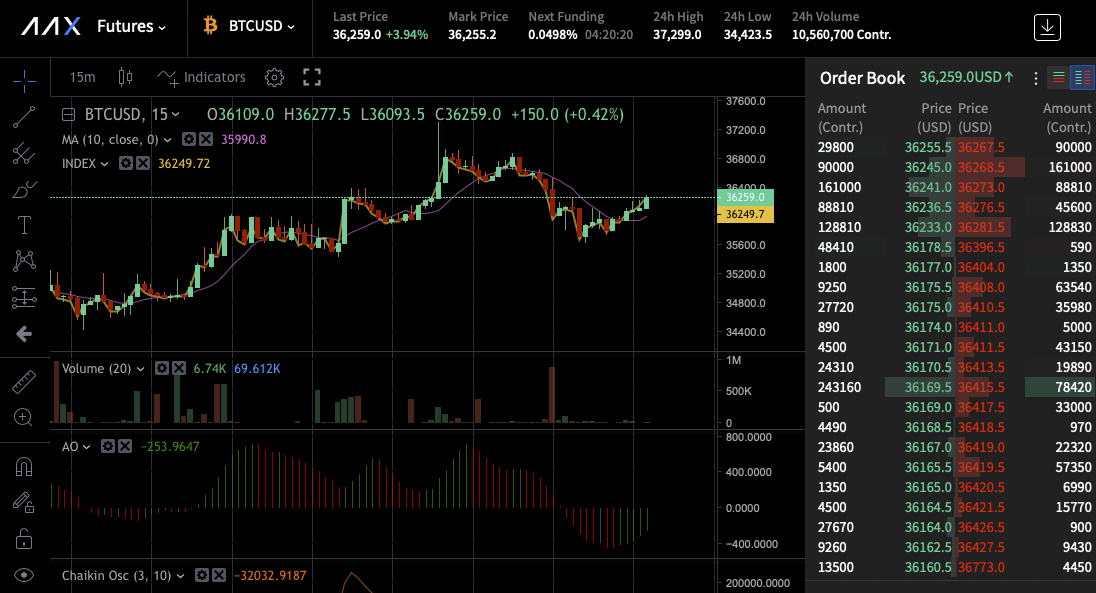Investors can use the Bitcoin futures to increase their potential gains through forecasting the future price of BTC. By description, bitcoin futures contracts are bets on the future price of bitcoin.
Investors can bet long if they think that the price will go up or short if they believe that the price will go down. With the leverage options, investors can easily maximize their profits many times over. However, it is worth noting that the higher the leverage, the smaller the margins of error in price prediction.
What Are Bitcoin Futures?
It is critical to understand what it means by futures trading. First, it is worth noting that spot trading is what many people who invest in crypto do currently. They sell or buy crypto at the price that it is trading currently. That is a spot trade.
A futures contract, or a futures trade, is an agreement between a seller and a buyer to speculate on what the price of an asset might turn out to be in the future. There has to be a buyer and a seller for a contract to be agreed upon.
Futures contracts have now opened the space to more traditional investors who might not be ready to allocate the funds to the asset itself, but who still want to benefit from its worthwhile and attractive price action.
So for instance, if an investor had taken out a futures contract sometime in March 2020 stating that they would buy bitcoin in November for $5,000, and someone agreed to sell bitcoin at $5,000 the buyer would be happy since the seller had to sell their bitcoin at the stipulated price.
But, if another buyer had said that bitcoin would be worth $50,000 in January, and somebody else met the bet, the buyer would have to buy the bitcoin at the inflated price. There are many other complexities involved in futures trading. But, what is crucial to note is that the bitcoin futures have now become an extremely popular trading strategy.

How Do Bitcoin Futures Work?
Traders and investors use futures contracts since they enable them to amplify their profits through leverage.
Leverage enables an investor to put down some money and gain access to a bigger amount. For instance, if one puts in $1,000, they can effectively join the market with $100,000 in markets that provide 100X leverage.
If another investor enters the market with $1,000 and closes their position after the price has gained 2%, they will have made a $20 profit. If nonetheless, they trade with a 100X leverage, the 2% would have yielded about $2,000, which would double their initial investment. Therefore, trading on futures markets can amplify the profits more than almost all other forms of short-term trading.
But with that leverage, the opportunity to lose money comes quite quickly. Liquidations in futures trading are what happens when a trader incorrectly guesses the movement of the market and the crypto exchange they had taken the contract from terminates the order and the trader loses all of their initial investment. There are other benefits as well.
For most of the institutional investors, they might not be familiar with the processes involved in creating a functional bitcoin wallet and using a crypto exchange. Also, buying and holding the crypto can be an alien experience.
Last year, aggregate open interest for bitcoin futures grew by around 175%. Furthermore, many home offices and investors use accounting software that may not have the capacity to process the data flows from wallets or crypto exchanges from the spot exchanges. On the other hand, futures trading is something that most investors are familiar with.
A spokesperson from AAX which is the world’s first digital asset exchange that is powered by the London Stock Exchange said:
“Futures contracts have opened the doors to more traditional investors who may not be ready to allocate funds to the asset itself, but who still want to benefit from its attractive price action.”
What Does Futures Trading In Crypto Entail?
When buying the futures contracts the first thing to know is that you are not buying the underlying asset, which in this case is bitcoin. Instead, you are taking out a contract that forecasts the price is going to rise (you go long) or it is going to drop (you go short).
The next thing to do is to understand the available leverage options. Different exchanges offer different amounts of leverage. At AAX, users can access 100x leverage. It means that if they put in $1,000 at 100x leverage, they would effectively be purchasing 100,000 contracts that are worth $100,000.
If one goes long, for instance, and decides to close their position once the price has surged by 5%, they will have made a $5,000 profit. If they exit at 10%, their profit would be $10,000. But if they guess wrong and the markets move in the opposite direction, the investor loses the amount that they put in (and no more).
Leverage effectively acts as a confidence indicator. The more certain an investor is of a movement upwards or downwards, the more leverage they would apply. Nonetheless, the more leverage they apply, the less volatility the contract will tolerate, which means that even a small diversion in the price of bitcoin would result in the contract being liquidated.

But, if a trader puts less leverage into a contract, there appears more room for market shifts.
Finally, investors must have an understanding of how a crypto exchange deals with futures contracts. At AAX, for instance, the platform closes the contract before it hits the total amount the investor puts in to ensure that traders are not then needing to cover bigger losses than they had earlier anticipated.
For instance, if an investor had bet $1,000, some exchanges would close out their position as close to that number as possible to avoid further losses. If an investor did incur losses over $1,000, exchanges like AAX would cover the difference that arises through something known as the Default Fund.








